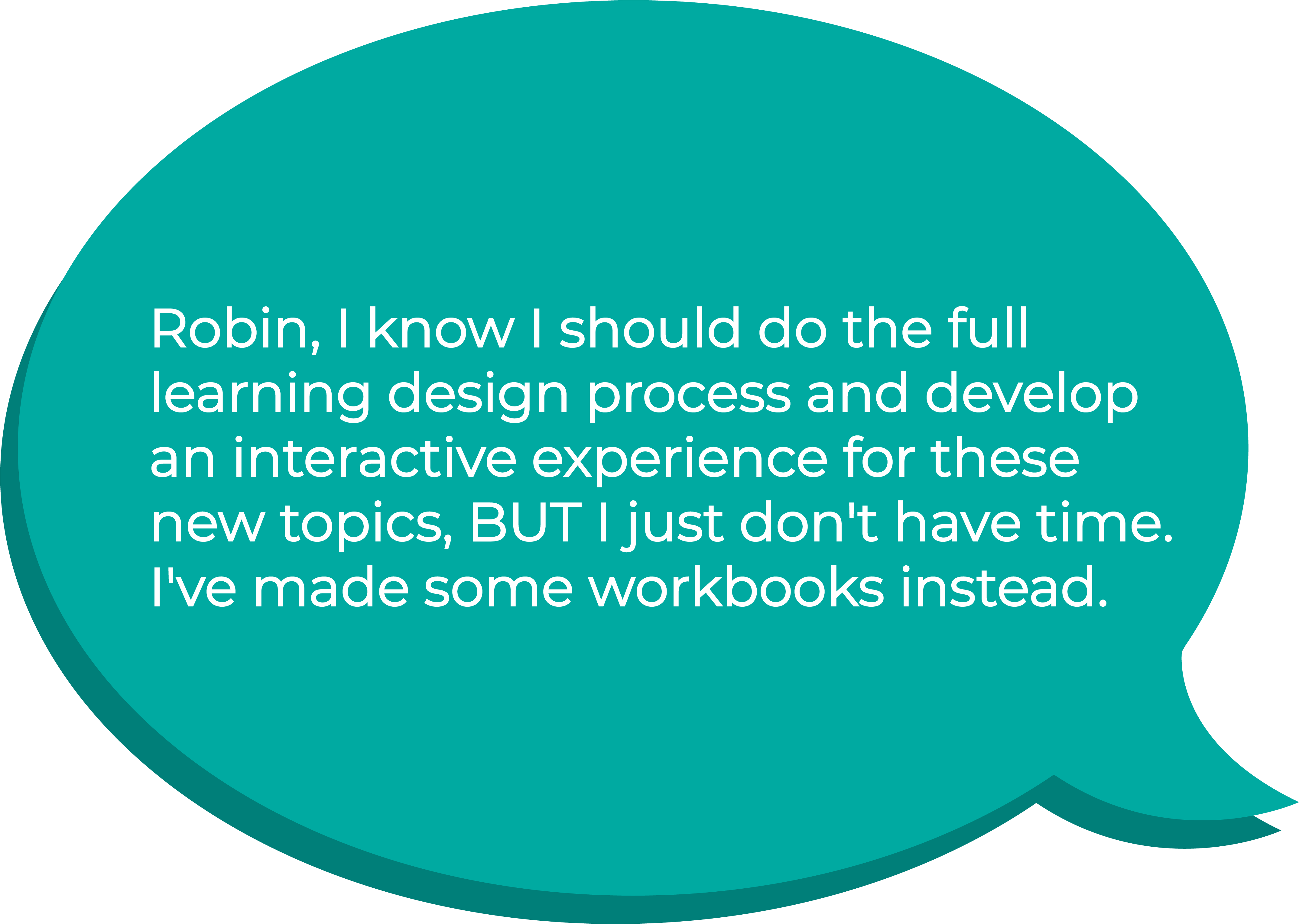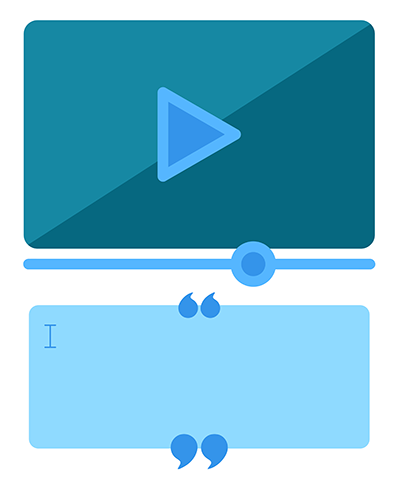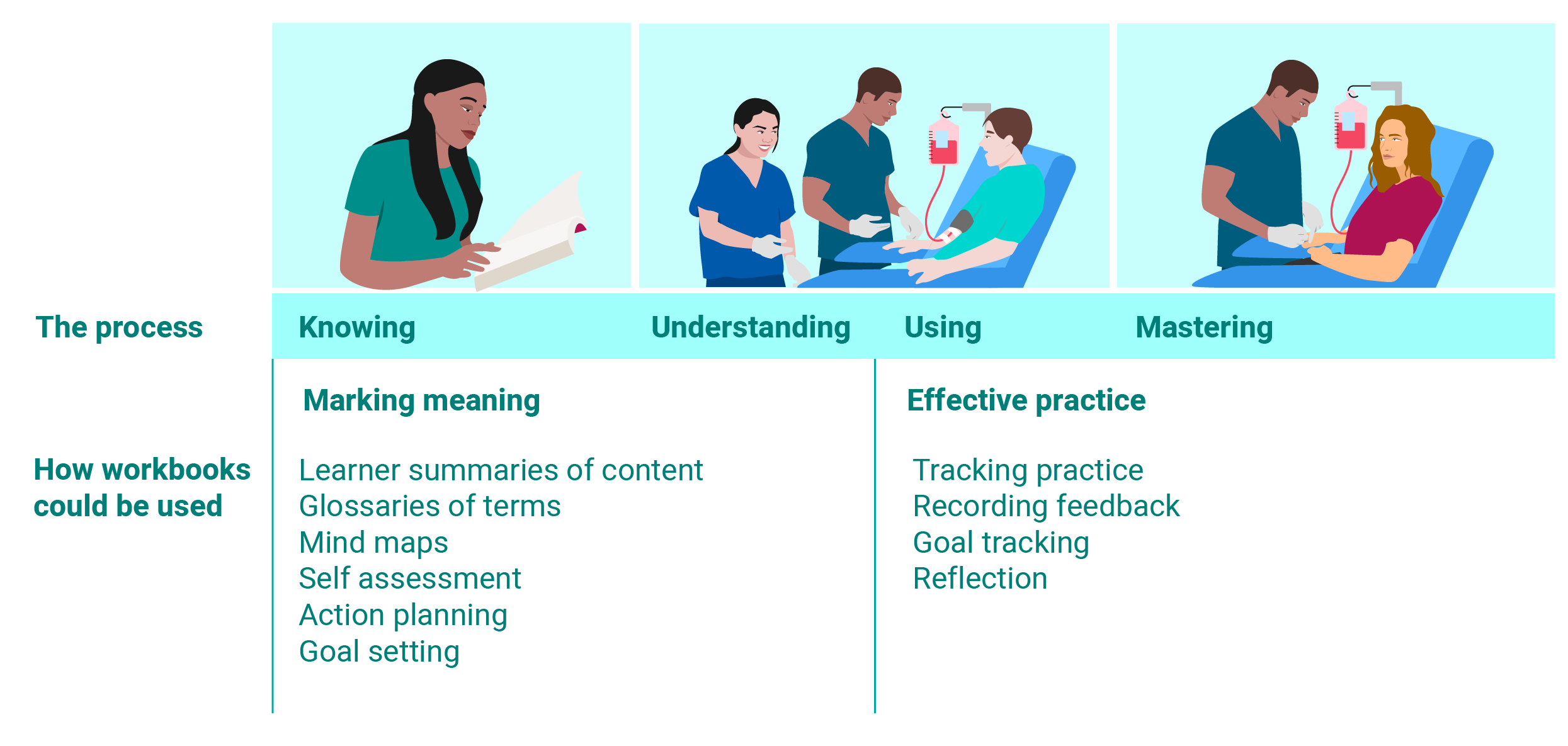Rapid eLearning course development using workbooks
A client once said -

The topic was teamwork, just one topic that is part of a bigger onboard program. When I looked at the workbook, it wasn't a boring text document. The content was brief, but more importantly, it was built around a series of powerful questions.
In a previous post on Designing more active learning with workbooks, we explored how workbooks can be used to build active learning, using activities that help learners make meaning of new found knowledge and support effective practices to build new behaviours.
This approach of workbooks can be a simple way to rapidly develop an eLearning course built around a series of powerful questions and activities.
There are two possible approaches using workbooks, as part of video based courses and using video as curated content.
Approach 1: Video plus a workbook

There has been growth in video-based learning. Many of these courses are just a person talking to a camera. It’s an approach that has been used in many content libraries.
This is because talking is the quickest way for subject matter experts to develop a course. While it’s often the quickest way to make a course it’s the hardest to change.
At first glance, video might be seen as being more engaging, but it’s often a passive form of lecture. Hours of video material of someone just talking can be boring. These videos haven't been designed to be interactive experiences. Video-based lectures are often used in Massive Open Online Courses (MOOCs), the platforms that support MOOCs have evolved and are now becoming more interactive.
Some courses include a workbook, which makes it more interactive. These can be a powerful learning tactic. They often include activities that are asking the learner to assess and reflect on current practice and plan future changes. This can be a more effective tactic than the fictional interactive scenarios that learning design often creates.
This approach is a powerful learning design tactic. The learner is working on their own problem and it’s personalised.
If a video is mixed with active learning it can be an effective and rapid way to develop eLearning courses.
Approach 2: Curated content plus workbooks

Curating existing content is a great way to rapidly build an eLearning course. Especially when skill’s are rapidly changing or when there is no internal expertise on topics. Both of these challenges are common at the moment because of technology changes and shifting business environments.
Without curated content the experience is just a list of links and the learning experience is passive, reading and watching.
There are other issues as employee's are often not sure how the content fits into their context, which means that overall learning is not actionable and is unlikely to lead to behaviour change.
In the podcast Fostering a learning culture in a tech company, Toby Newman talked about an approach they used at HERE where they curate a piece of content about technology and followed up with a piece of custom content about who that technology or process is used at HERE.
This is where a workbook can help guide a learner to make meaning of content by planning actions and tracking the practice.
The learning design process for this process becomes:
1. Selecting the right content
2. Designing the questions for the 'workbook'
The addition of a workbook does involve more work than just selecting content but it’s still faster than developing totally new learning experiences.
Types of activities
The next stage to making a more effective and active learning experience could be to add a workbook that guides the learner in making meaning of the content and helping support effective practice.

Some learners do these steps naturally, e.g. they take notes, make plans. Most learners need more guidance.
Workbooks beyond video and content curation.
In this blog I’ve just outlined two approaches. The key message is the questions and prompts included in the workbook can be used to transform passive content into being an active transformational learning experience.

